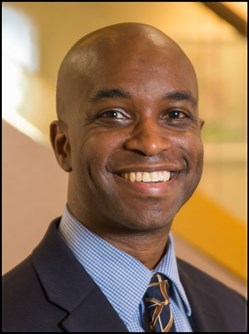If someone you care for has had a stroke or brain injury, struggles with Parkinson’s disease, or has had a significant fracture, they likely will require special medical care at a physical rehabilitation facility.
You may have heard about rehabilitation facilities before, but did you know that there’s more than one type of rehabilitation facility? Depending on your loved one’s needs, you may need to use a long-term care facility, an inpatient rehabilitation facility, or skilled nursing. Here’s a little more information about each type of facility.
Long-term Acute Care Facilities
Long-term acute care facilities (LTACs) are specialty hospitals designed for longer stays of 20 to 30 days. The care offered at an LTAC is more intensive than that at an inpatient rehabilitation facility or a skilled nursing facility. Patients at LTAC facilities usually arrive after a hospital stay and require special care needs for
- ventilator weaning (this could affect patients with chronic obstructive pulmonary disease, congestive heart failure, pneumonia, and other conditions)
- complex medical conditions (for example, the patient may have several medical conditions that affect various organs)
- wound management
A variety of specialists will work with patients at an LTAC hospital to build up their strength. These specialists include doctors, nurses, physical therapists, speech/language therapists, and occupational therapists.
Inpatient Rehabilitation
Inpatient rehabilitation facilities help those with Parkinson’s disease, hip fractures, stroke, or traumatic brain injury who need intensive therapy to return home. Again, a variety of healthcare specialists will work with patients—but one difference in inpatient rehabilitation facilities is the amount of time devoted to rehabilitation. “Inpatient rehabilitation is the most aggressive, with patients having 3 hours a day of therapy about five days per week,” says occupational therapist Sarah Stromsdorfer, OTR/L, of Emory Healthcare in Atlanta and founder of MyOTSpot.com. As with LTAC, patients work with physical therapists, occupational therapists, and speech/language therapists, in addition to other providers.
The average length of stay in an inpatient rehab facility is only one to two weeks. Many patients may not qualify for inpatient rehab, at least not immediately, because of the intense therapy provided, Stromsdorfer says. Some patients must first regain their strength and stamina to a specific level before they can stay at an inpatient rehabilitation facility and undergo the intensive therapy.
Nursing and respiratory care are provided 24 hours a day, seven days a week at inpatient rehabilitation facilities.
Skilled Nursing
After a stay in the hospital for a stroke or joint replacement, a patient may not yet be ready to go home. Skilled nursing is one option to help this type of patient. Skilled nursing can be useful if the patient does not have enough help at home or needs to become stronger or more mobile before returning home. Chronic health problems such as diabetes or lung or heart problems can be better monitored in a skilled nursing facility. Skilled nursing provides regular care from licensed nurses. Many times, skilled nursing facilities are referred to as nursing homes.
Like the other rehabilitation facilities, patients work with a variety of healthcare providers. Skilled nursing facilities also will provide patients help with meals and hygiene. Care is available 24 hours a day. The average length of stay at skilled nursing facilities is about 26 days.
After a stay at any of these rehabilitation facilities, patients may require additional care at home with home health or private-duty care. Home health nurses can provide help with additional therapy, including wound care, injections, nutrition therapy, and patient education. Private-duty home aides will assist with light housekeeping, meal preparation, hygiene, and social interactions.
The Role of Therapy
As mentioned previously, in addition to medical care, patients who stay at physical rehabilitation facilities receive care from a wide range of health providers, including occupational therapists, physical therapists, and speech/language pathologists. These various types of therapy play an essential role in getting patients stronger.
“They are instrumental in working together to address each client’s deficits and improve independence and their level of function,” Stromsdorfer says. “Physical therapists address patients’ strength, balance, and mobility, and occupational therapists address strength, mobility, and educating patients on strategies to increase their independence with their self-care tasks. When warranted, speech therapists can address impaired cognition, swallowing and speech is affected by neurological impairment.”
Know Your Options for Rehabilitation Services
If you or a loved one is at an acute-care hospital and may need longer-term physical rehabilitation, you can work with your doctors and your insurance to choose the right facility. “Your therapists in the hospital will assess your level of function and help you determine which level of rehab is right for you,” Stromsdorfer says. “You may find that you only need a few visits of home health therapy, or you may need several weeks of inpatient or subacute rehab. Don’t feel like you are alone in this decision as your acute care therapists and case managers are trained to help you with this decision.”
You also can research rehab options in advance of need, while you or your loved ones are completely healthy. Advanced research gives you adequate time to decide what facility seems right if you ever have a need.
Another good way to educate yourself about the different types of rehabilitation facilities is to take tours of local facilities or attend community lectures that many of these organizations sponsor.
Although a stay at a rehabilitation facility can be costly, your insurance or Medicare will likely help cover the expenses. Check with your individual plan for more details.




